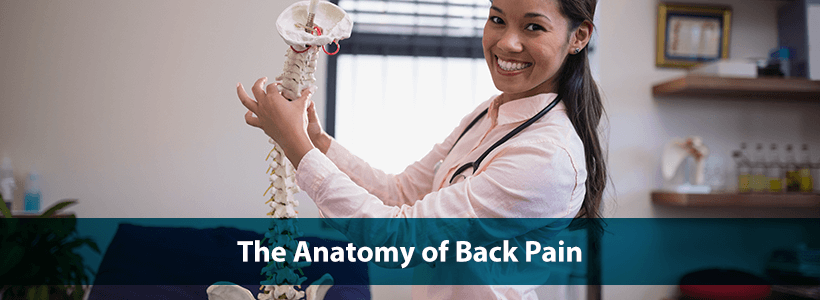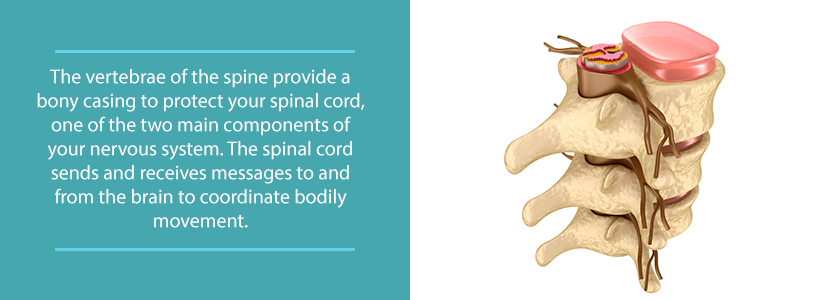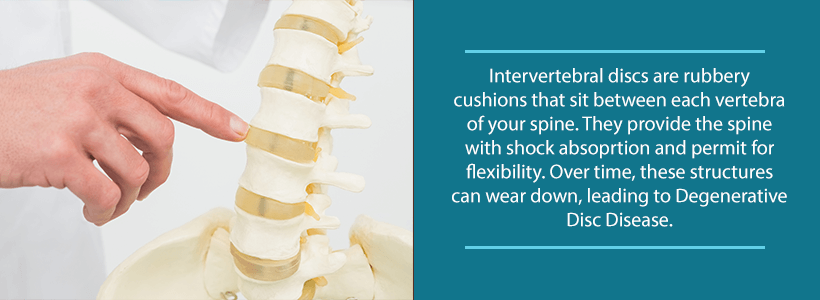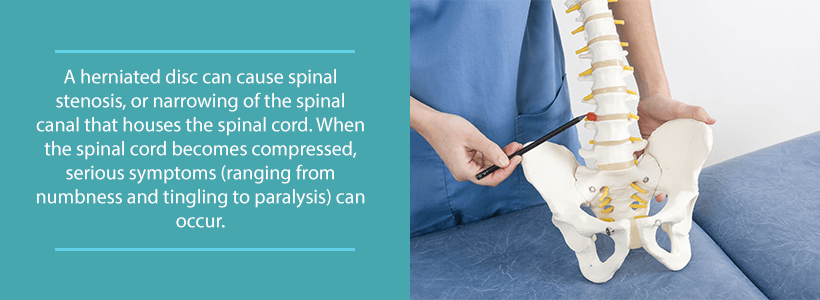If you’re dealing with frequent back or neck pain, your posture might be playing a bigger role than you think. Whether you're sitting at a desk all day or scrolling on your phone for hours,…
Everything we do—laying, sitting, walking, and more—depends on our spine working properly. Unfortunately, we don’t tend to think of our spine or back unless we start to feel pain. Back pain is a condition that up to 80% of the population will suffer at some point in their lives. It is the most common reason for lost work days, disability claims, and missing out on the things we love to do. Back pain can range from dull and nagging to agonizing or debilitating.
What exactly causes back pain? The key to understanding back pain is taking a closer look at the spine, nervous system, and other tissues that help to manage our movement.
Understanding the Spine & Back
The anatomy of the spine is complex. A series of bones, muscles, and connective tissues work together to help it function. The key role of the spine is to protect the spinal cord and nerve roots so they can safely relay messages to and from the brain. Without these messages, you wouldn’t be able to survive.
In addition, your spine enables movement and assists with activities such as weight-bearing, shock absorption, and posture. Most adults have 33 vertebrae which divide the spine into five areas:
- Cervical Spine: 7 vertebrae in the neck region
- Thoracic Spine: 12 vertebrae in the upper back
- Lumbar Spine: 5 vertebrae in the lower back
- Sacral Region: 4 vertebrae near the tailbone.
The lower areas of the spine bear more of the body’s weight to support movement and other daily activities. The cervical and lumbar spine enable the most movement, and, as a result, are the most prone to injuries.
Each vertebra has a rounded bone at the front of the spine called the vertebral body. A ring formed by two bones attaches to the back of the vertebral body. Inside of this ring resides the spinal cord—the nervous system’s “superhighway” that sends and receives messages between the body and the brain. The back of the spine also has other canals that allow nerves to extend from the spinal cord throughout the body.
In addition, our vertebrae are connected by joints. Many of these joints are known as synovial joints—the most flexible joints in our body. Without these joints, our bones would not have any movement. Furthermore, flexible, fibrous tissue, known as ligaments, connects the bones to each other.
Of course, another key component to movement is muscles. These fibrous tissues connect to the spine with the help of tendons. Muscles contract and expand, with the help of nerves, to move our bones.
Spinal Discs: The Spine’s Built-in Shock Absorbers
Intervertebral discs are important structures that deserve their own section. If you’ve ever had a bulging or herniated disc, you know firsthand the kind of pain that these little cushions can cause.
Intervertebral discs are tough ligaments between each vertebra that connect the spine, allow for flexibility, and absorb shock as the body moves. In addition, cartilage, a glossy lubricating tissue, covers the ends of bones at the joint to facilitate motion and minimize friction.
Degenerative Disc Disease occurs when these discs break down from years of overuse or the natural consequences of aging. In fact, one of the most common causes of back pain in individuals over age 45 can be attributed to Degenerative Disc Disease.
How Does Each of These Components Contribute To Back Pain?
There are many reasons why you may experience back pain. In some cases, a simple strain of a back muscle can cause discomfort. Many people find that injury or changes to spinal structure often set off a chain reaction that can affect other areas. Let’s look at how the different components of the spine can cause you discomfort.
Muscle & Soft Tissue Disorders
As you know, tendons connect muscles to vertebrae. These muscles support the spine and make the trunk of the body bend, twist, and perform other daily functions. Many people who suffer from back pain have hidden damage to their muscles and tendons. This can be due to stress on these soft tissues from improper lifting, obesity, poor posture, or trauma to the area. A muscle strain occurs when lower back muscles are overused or stretched too far. Ligaments, the tissue connecting bones, can also suffer damage, leading to pain and limited mobility.
In addition, when people suffer from back pain, they try their hardest not to move in ways that cause them even more pain. This can cause muscle weakness and a reduction in flexibility, which often leads to even more issues down the road.
Sometimes the origins of your back pain don’t even start with your spine. For example, people with tight hamstrings (the muscles at the back of your thigh) can develop lower back pain as a result.
Spine Conditions Caused By Intervertebral Discs
As we age, the discs separating our vertebrae tend to dry out and lose shape. Commonly known as degenerative disc disease, this causes structural changes in the spine and can lead to a pinched nerve.
In addition, a ruptured disc occurs when the gel-like center of a disc breaks through the outer fibrous ring. Sports and work-related injuries, falls, and accidents commonly lead to this type of condition. In most cases, people develop ruptured discs in the lower back. Ruptured discs can, however, occur anywhere in the spine, from the neck all the way down to the lumbar region.
Vertebral Fractures & Diseases
A spinal vertebra is not a single bone but a series of small bones connected by joints and soft tissues. There are structures in place, like the discs, to help protect the spine and absorb the shocks of everyday movement. Unfortunately, the vertebrae are not immune to injury. Osteoporosis, or weakened bones, can lead to compression fractures of the vertebrae. In addition, a vertebral fracture may occur following a bad fall, accident, or sports injury.
Likewise, if the joints at the back of the spine, known as facet joints, become injured, it can trigger muscle spasms and apply pressure to nerves.
Spinal Cord & Nerve Dysfunction
The spinal column houses the spinal cord and contains openings to allow nerves to reach every area of the body. Changes in the vertebrae, joints, and discs can cause narrowing of the spinal canal, known as spinal stenosis. This condition can be extremely painful and even lead to more serious conditions like muscle weakness or paralysis.
Since the nerves are connected to other areas of the body, your pain isn’t limited to the back. Radiculitis, or pain that starts in one area and radiates to other parts of the body, is a common symptom when nerves are compressed. For example, sciatica is a condition that occurs when the sciatic nerve is compressed. A patient who suffers from sciatica often feels lower back pain that radiates to the back of the thigh and leg.
Diagnosing & Treating Your Lower Back Pain
As you can see, the cause of your back pain may not be a simple answer. Some people experience back pain for a short period of time. Others develop chronic, painful conditions that limit their activities and quality of life.
If conservative treatments like rest or over-the-counter medications aren’t helping with your back pain, it’s time to get the guidance you need from an orthopedic doctor. Since many back pain conditions have a similar set of symptoms, receiving a proper diagnosis is key to finding the best treatments for you. Be wary of a doctor who listens to your complaints about back pain and sends you off with only pain medications. While these can provide temporary relief, they may not treat the underlying problem.
An orthopedic doctor will review your medical history, symptoms, and everyday activities. The doctor also performs a thorough physical examination and may request diagnostic imaging tests depending on your situation. This information will help your doctor determine the most appropriate treatments for you.
Finding Solutions for Your Neck & Back Pain Now
If you’ve been struggling with back pain, then you’ll want to find the best way to manage your discomfort and successfully treat your condition. You’ll want a knowledgeable and trusted source who has shown proven results in helping others with similar troubles.
Our team at Orthopedic & Laser Spine Surgery are experts in treating back pain. Using the latest research, technology, and treatments, our doctors will accurately diagnose your condition and suggest the best solutions for you. In fact, our team of spine experts often finds non-surgical treatments that can help with your specific condition.
If surgery is necessary, then we use the latest, minimally invasive surgeries to minimize pain and scarring. Since these procedures do less harm than traditional open surgeries, you can expect less pain and reliance on pain medications. In fact, most of our patients experience a faster recovery time so they can get back to doing what they love even sooner.
Give yourself a brighter future by taking care of your pain today. Take some time right now to schedule a consultation at Orthopedic & Laser Spine Surgery by calling (855) 853-6542.




